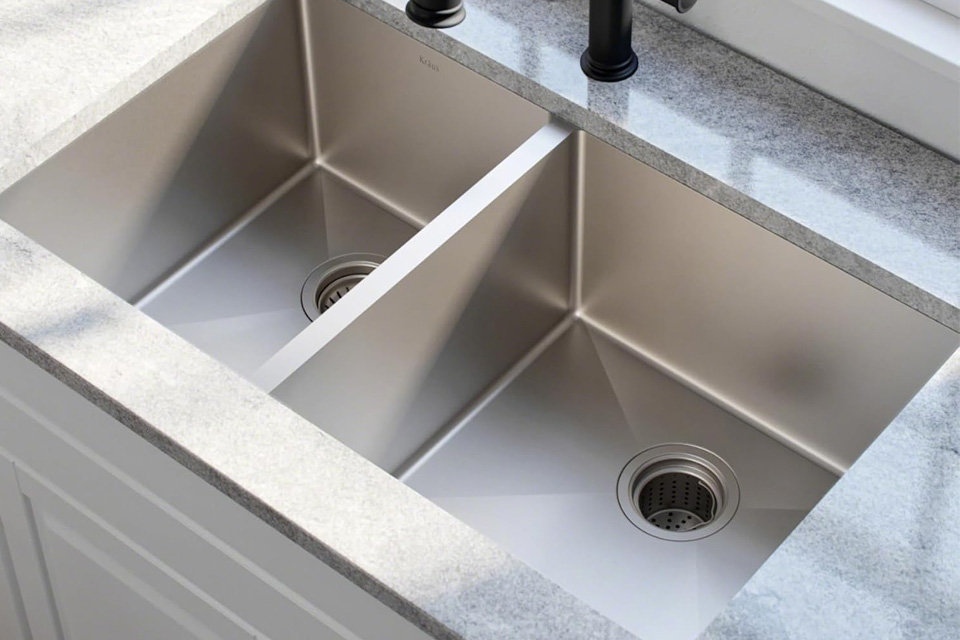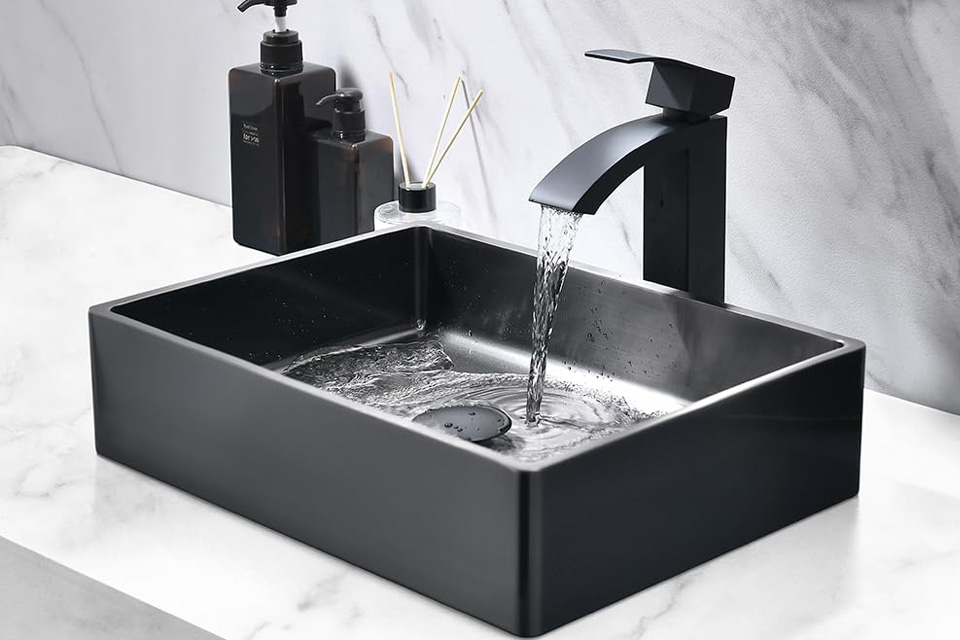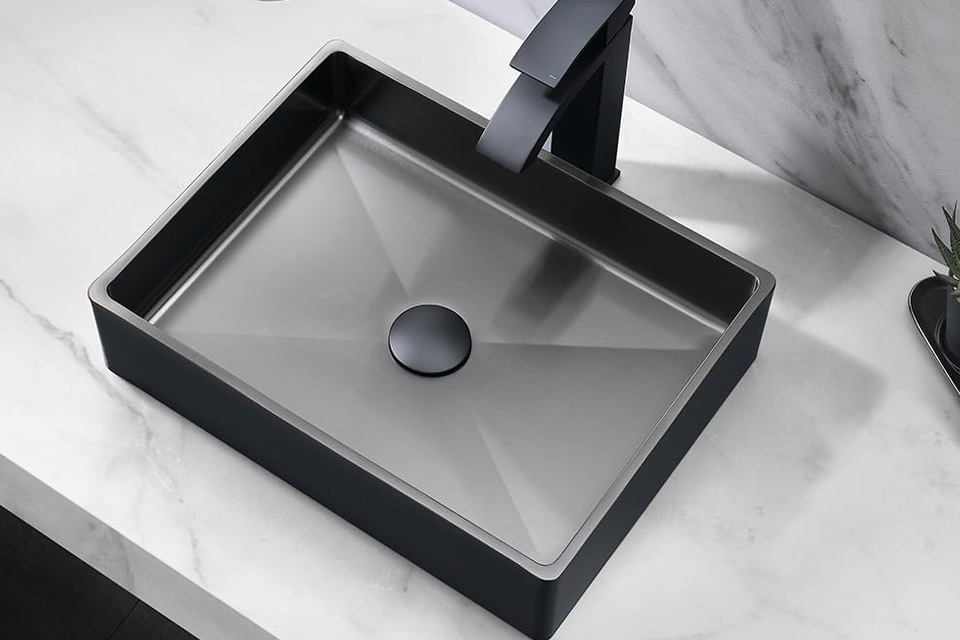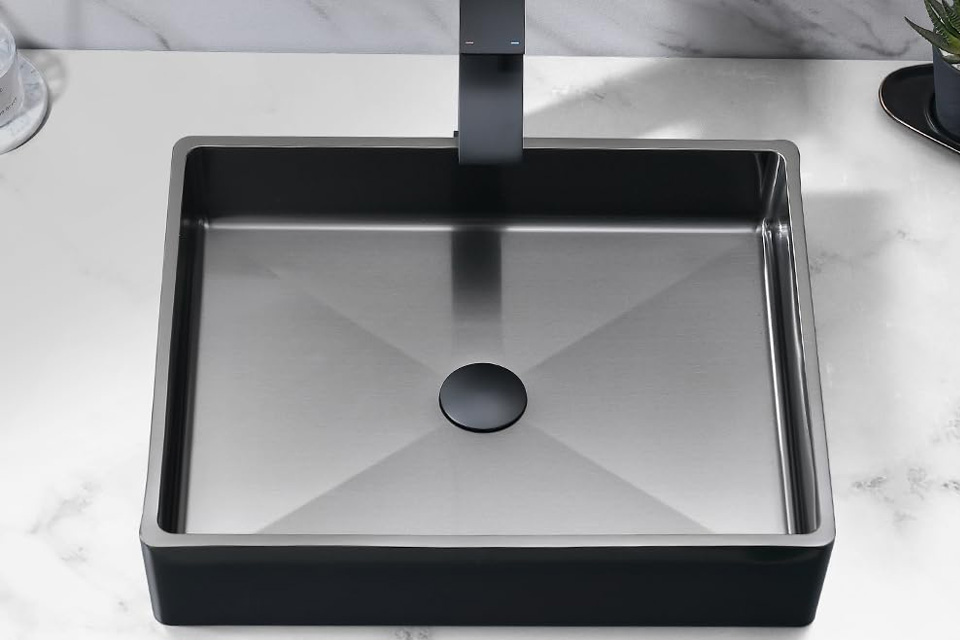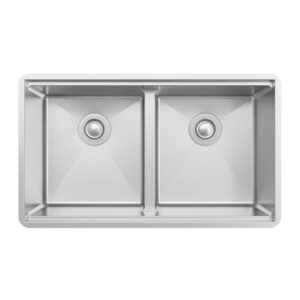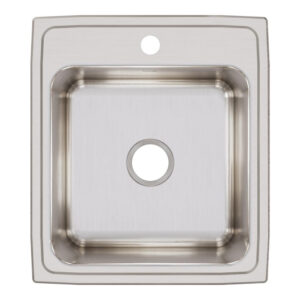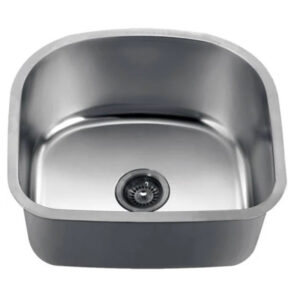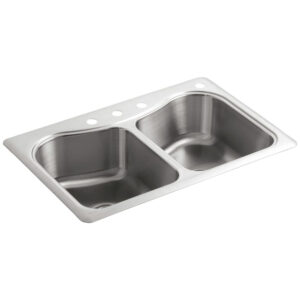
Why Are Bathroom Sinks Made of Stainless Steel? Unveiling the Secrets of Sink Materials
Table of Contents
Whether you’re renovating your bathroom or simply curious about sink materials, this article will provide valuable insights into the world of bathroom fixtures. Let’s dive in and discover why stainless steel has become a go-to option for many homeowners and designers.
What Makes Stainless Steel an Ideal Material for Bathroom Sinks?
Stainless steel has gained popularity in bathroom sink design for several compelling reasons. First and foremost, its durability is unmatched. Stainless steel sinks can withstand daily wear and tear, resisting scratches, dents, and stains better than many other materials. This resilience makes them an excellent long-term investment for homeowners. Another key advantage is the material’s hygienic properties. Stainless steel is non-porous, which means it doesn’t harbor bacteria or germs, making it easier to keep clean and sanitary. This is especially important in a bathroom setting where hygiene is paramount.
How Does Stainless Steel Compare to Porcelain Sinks?
When it comes to bathroom sinks, porcelain has long been a traditional choice. However, stainless steel offers some distinct advantages:
- Durability: While porcelain can chip or crack if heavy objects are dropped on it, stainless steel is much more resistant to impact damage.
- Weight: Stainless steel sinks are generally lighter than porcelain, making them easier to install and putting less strain on countertops.
- Maintenance: Stainless steel requires less maintenance and is less likely to stain compared to porcelain
That being said, porcelain sinks do have their merits, such as a classic aesthetic and a wide range of color options. The choice between the two often comes down to personal preference and specific bathroom design needs.
What Are the Pros and Cons of Stainless Steel Bathroom Sinks?
Let’s break down the advantages and disadvantages of stainless steel sinks:
Pros:
- Exceptional durability
- Easy to clean and maintain
- Hygienic and non-porous
- Resistant to heat and stains
- Modern, sleek appearance
Cons:
- Can be noisy without proper insulation
- May show water spots more easily
- Limited color options compared to other materials
- Can be more expensive than some alternatives
Are There Different Grades of Stainless Steel for Bathroom Sinks?
Yes, not all stainless steel sinks are created equal. The quality of a stainless steel sink is often determined by its grade:
- Grade 304: This is the most common grade for bathroom sinks. It offers excellent corrosion resistance and durability.
- Grade 316: Known as “marine grade” stainless steel, this is even more resistant to corrosion and is ideal for coastal areas or homes with hard water.
When shopping for a stainless steel sink, pay attention to the gauge as well. Lower gauge numbers indicate thicker, more durable steel.
How Do Copper Sinks Compare to Stainless Steel?
Copper sinks have gained popularity in recent years for their unique aesthetic appeal. Here’s how they stack up against stainless steel:
- Appearance: Copper sinks offer a warm, rustic look that can be a striking focal point in a bathroom. Stainless steel provides a more modern, sleek appearance.
- Antimicrobial properties: Copper has natural antimicrobial properties, which can be beneficial in a bathroom setting.
- Patina: Copper develops a patina over time, which some find appealing. Stainless steel maintains its original appearance.
- Maintenance: Copper requires more care to maintain its appearance, while stainless steel is relatively low-maintenance.
What About Natural Stone Sinks for Bathrooms?
Natural stone sinks, such as those made from granite or marble, offer a luxurious and unique option for bathrooms. However, they come with their own set of considerations:
- Aesthetics: Stone sinks can provide a one-of-a-kind look that’s hard to replicate with other materials.
- Durability: While stone is durable, it can be more prone to chipping and cracking than stainless steel.
- Maintenance: Natural stone requires regular sealing to prevent staining and maintain its appearance.
- Weight: Stone sinks are typically much heavier than stainless steel, which may require additional support during installation.
Are Glass Sinks a Viable Alternative to Stainless Steel?
Glass sinks have become increasingly popular for their artistic appeal and unique designs. Here’s how they compare to stainless steel:
- Aesthetics: Glass sinks can be true works of art, available in a wide range of colors and designs.
- Durability: While tempered glass is strong, it’s generally not as durable as stainless steel and can be prone to chipping or cracking.
- Maintenance: Glass sinks require frequent cleaning to maintain their appearance, as water spots and soap scum can be more visible.
- Cost: High-quality glass sinks can be more expensive than many stainless steel options.
What Are the Environmental Considerations of Choosing a Stainless Steel Sink?
In today’s eco-conscious world, the environmental impact of our choices is increasingly important. Stainless steel has several environmental benefits:
- Recyclability: Stainless steel is 100% recyclable and can be repurposed without losing quality
- Longevity: The durability of stainless steel means fewer replacements over time, reducing waste.
- Energy efficiency: The production of stainless steel has become more energy-efficient in recent years.
However, it’s worth noting that the initial production of stainless steel can be energy-intensive compared to some other materials.
How Can I Maintain and Clean My Stainless Steel Bathroom Sink?
Proper maintenance is key to keeping your stainless steel sink looking its best:
- Daily cleaning: Wipe down the sink with a soft cloth and mild soap after each use.
- Avoid abrasives: Don’t use steel wool or abrasive cleaners, as these can scratch the surface.
- Polish regularly: Use a stainless steel polish to maintain shine and protect the surface.
- Address hard water: In areas with hard water, dry the sink after each use to prevent mineral buildup.
By following these simple steps, you can ensure your stainless steel sink remains in top condition for years to come. In conclusion, while stainless steel may not be the only option for bathroom sinks, its combination of durability, hygiene, and modern aesthetics makes it a popular and practical choice for many homeowners. By understanding the pros and cons of various sink materials, you can make an informed decision that best suits your needs and preferences.
Key Takeaways
- Stainless steel sinks offer exceptional durability and hygiene.
- They require less maintenance compared to many other sink materials.
- Consider factors like aesthetics, cost, and environmental impact when choosing a sink material.
- Proper care and cleaning can significantly extend the life of a stainless steel sink.
- While stainless steel is popular, other materials like porcelain, copper, and glass offer unique benefits and may be better suited to certain design preferences.
Comments
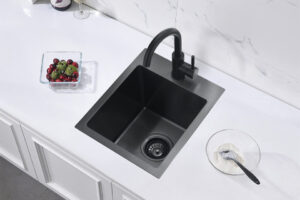
How to Unclog Your Kitchen Sink: The Ultimate Guide
Are you facing the frustrating problem of a clogged kitchen sink? Don’t worry, you’re not alone.
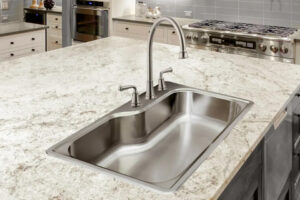
How to Clean Your Stainless Steel Sink Like a Pro
Keeping your stainless steel sink clean and sparkling not only enhances the overall look of your kitchen but also ensures long-term durability and hygiene.
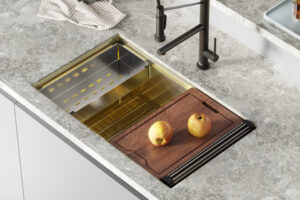
Choosing Kitchen Countertops for Undermount Sinks: The Ultimate Guide
Undermount sinks have become a popular choice for modern kitchens, and finding the right countertop to pair with them is essential for both aesthetics and functionality.
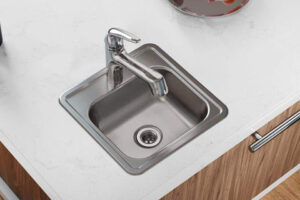
How To Choose a Good Quality Stainless Steel Kitchen Sink
Choosing the right stainless steel kitchen sink can significantly impact both the functionality and aesthetics of your kitchen.
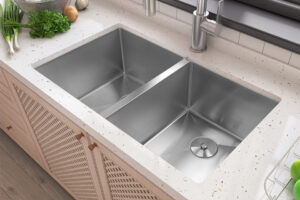
How to Seal Your Kitchen Sink to the Countertop: A Complete Guide
Sealing your kitchen sink to the countertop is a crucial step in ensuring a long-lasting, leak-free installation.
Tags
Related Blog
Learn the newest trends and common knowledge from our blog in stainless steel sinks business.
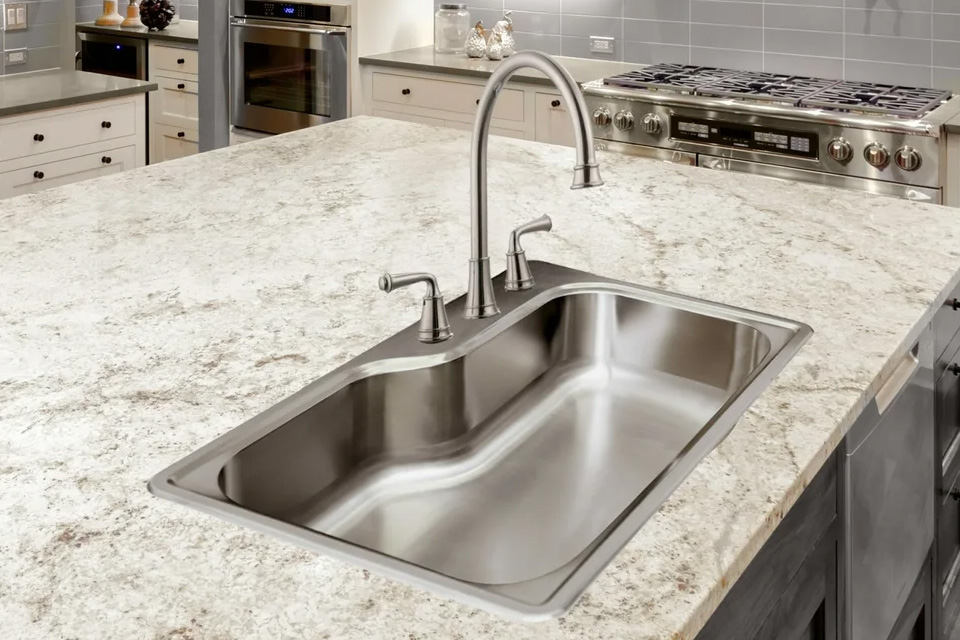
How to Clean Your Stainless Steel Sink Like a Pro
Keeping your stainless steel sink clean and sparkling not only enhances the overall look of your kitchen but also ensures long-term durability and hygiene.
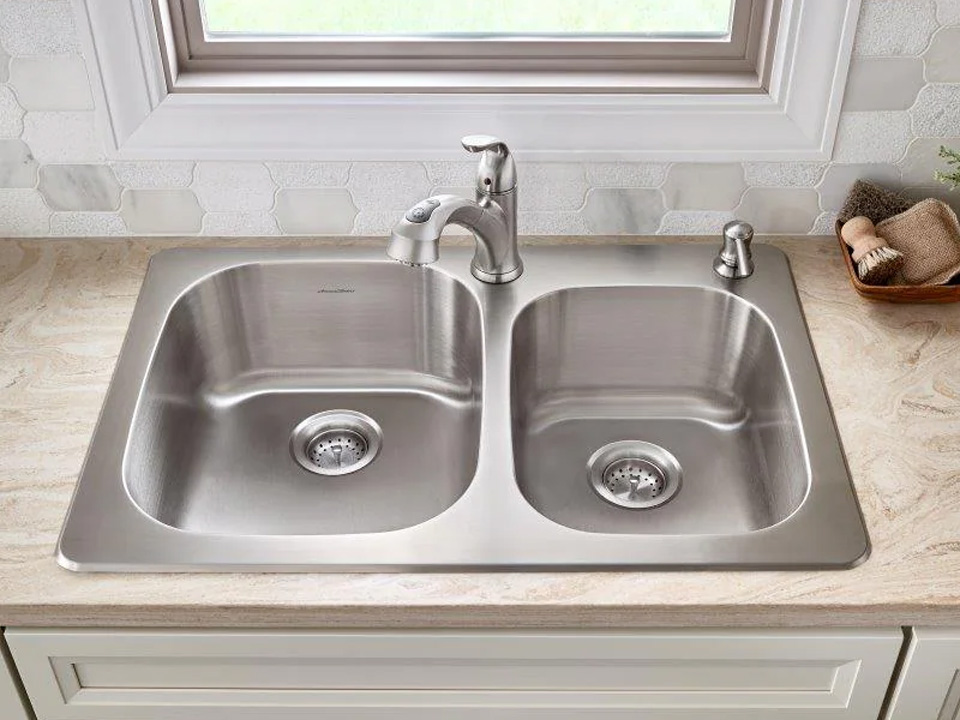
The Stainless Steel Kitchen Sink: A Modern Kitchen Essential
When planning a kitchen renovation or update, selecting the perfect sink is a crucial decision.
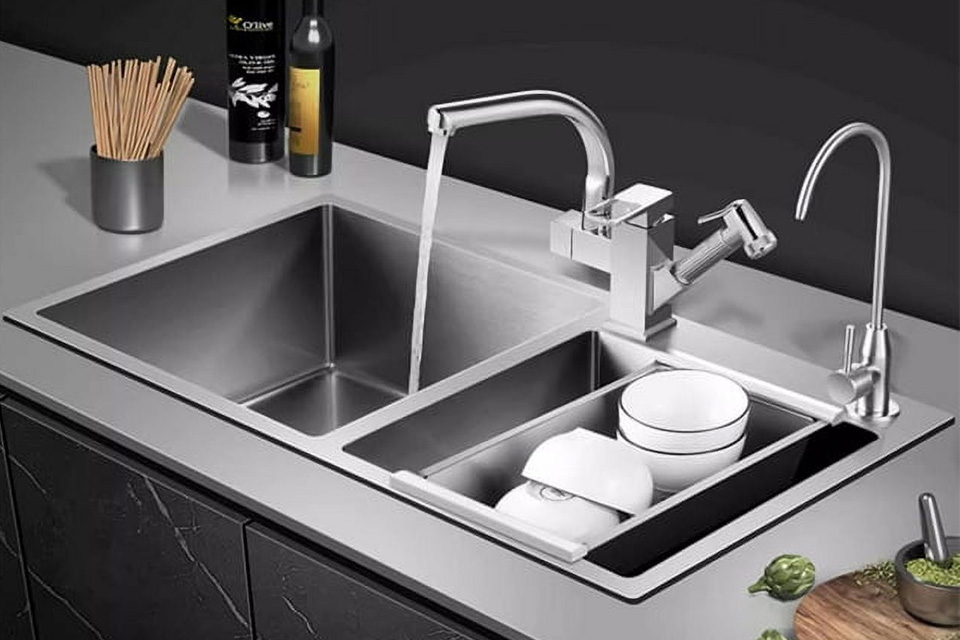
Which Stainless Steel Sink is Better: 18 Gauge or 20 Gauge
When deciding between an 18 gauge and a 20 gauge stainless steel sink, consumers face important considerations regarding thickness, durability, noise levels, and cost.

